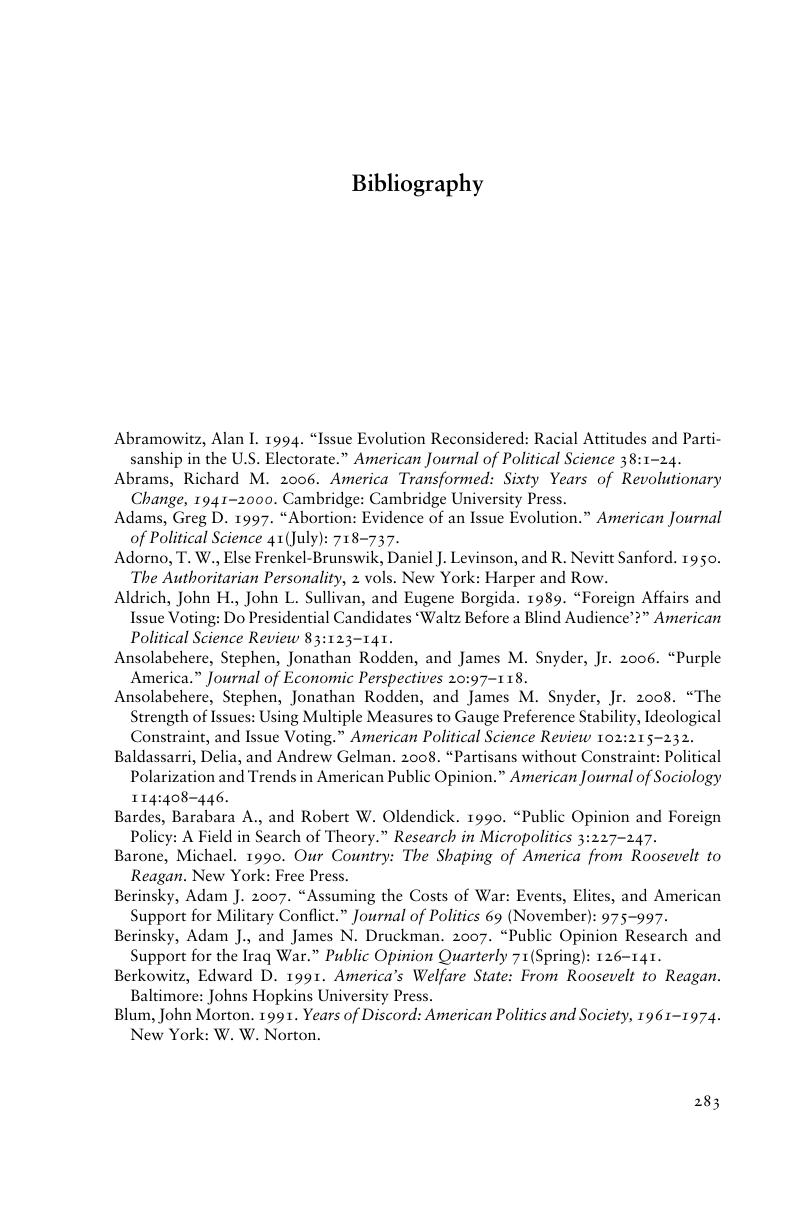Bibliography
Published online by Cambridge University Press: 05 June 2012
Summary

- Type
- Chapter
- Information
- The American Public MindThe Issues Structure of Mass Politics in the Postwar United States, pp. 283 - 290Publisher: Cambridge University PressPrint publication year: 2010



